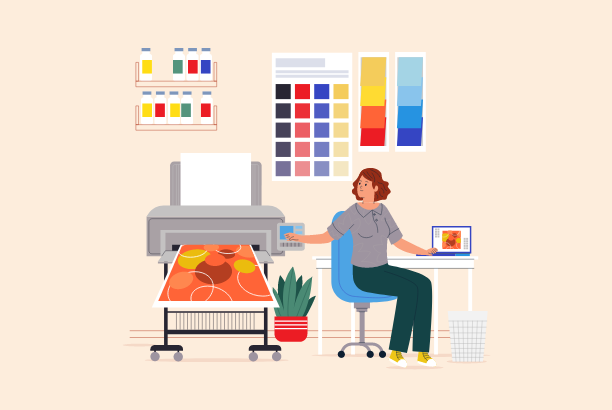Designing for print and digital mediums each present unique challenges and opportunities for graphic designers. While both mediums share fundamental design principles, there are important distinctions that designers must consider when creating visual content. Let’s explore some key considerations when designing for print versus digital platforms:

Medium-Specific Constraints
Print design is bound by physical constraints such as paper size, printing techniques, and color reproduction capabilities. Designers must consider factors like bleed, trim, and safe zones to ensure that their designs translate seamlessly from screen to print. On the other hand, digital design offers greater flexibility in terms of layout, interactivity, and multimedia integration, allowing designers to create dynamic and engaging experiences for users.
Resolution and Image Quality
Print design requires high-resolution images and graphics to ensure crisp and clear output. Designers must carefully select images with sufficient resolution for printing and optimize them for the desired print size. In digital design, resolution is less of a concern, but designers must still consider factors like image compression and file formats to optimize load times and maintain image quality across devices.
Color Management
Achieving consistent color reproduction is essential in both print and digital design. However, color management practices differ between the two mediums. Print designers must work with CMYK color models and consider factors like ink saturation and paper stock to achieve accurate color representation. Digital designers, on the other hand, typically work with RGB color models and must ensure color consistency across various screens and devices.
Typography and Readability
Typography plays a crucial role in both print and digital design, but considerations for readability may vary between the two mediums. In print design, designers must consider factors like font size, line spacing, and typeface legibility to ensure that text is easily readable in printed materials. In digital design, designers must also consider factors like screen resolution, font rendering, and responsive design to optimize readability across different devices and screen sizes.
Interaction and Engagement
Digital design offers opportunities for interaction and engagement that are not possible in print design. Designers can incorporate interactive elements such as animations, videos, and hyperlinks to create immersive digital experiences for users. However, designers must also consider usability and accessibility principles to ensure that digital content is intuitive and inclusive for all users.
Designing for print and digital mediums requires careful consideration of medium-specific constraints, technical requirements, and user expectations. By understanding the key differences between print and digital design and adapting their approach accordingly, designers can create visually compelling and effective visual content for a variety of contexts and audiences.

